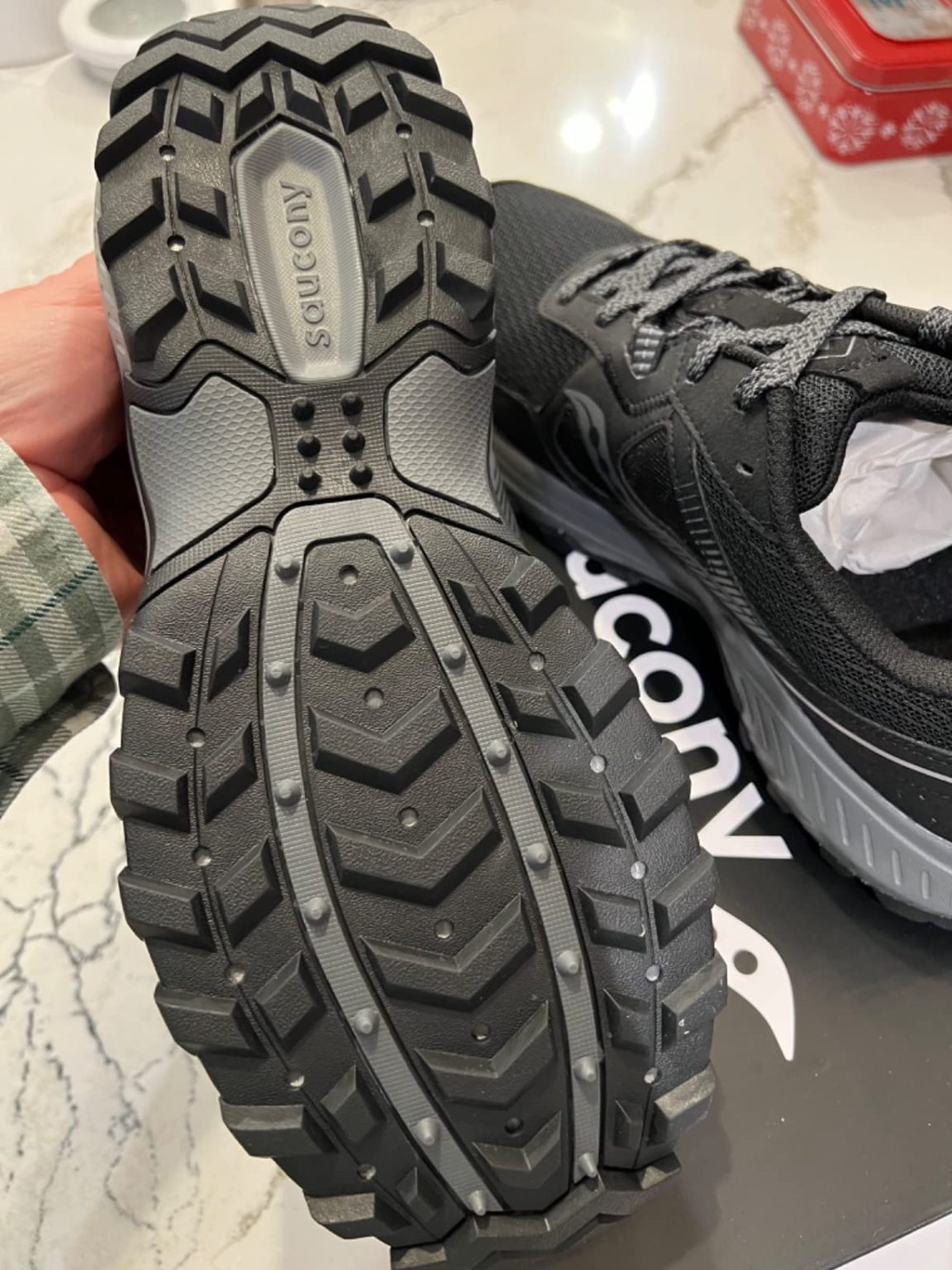Ever wonder why a trail shoe with stellar comfort ratings keeps showing up in “buyer beware” forums? Mike here, and after diving deep into trail running gear for over a decade, I was genuinely curious about the split personality of the Saucony Excursion TR16. With hundreds of glowing comfort reviews sitting alongside some seriously concerning durability complaints, I had to see which story was true. Three months and 47 trail sessions later, here’s the unfiltered truth about whether this $70 hybrid can actually deliver.
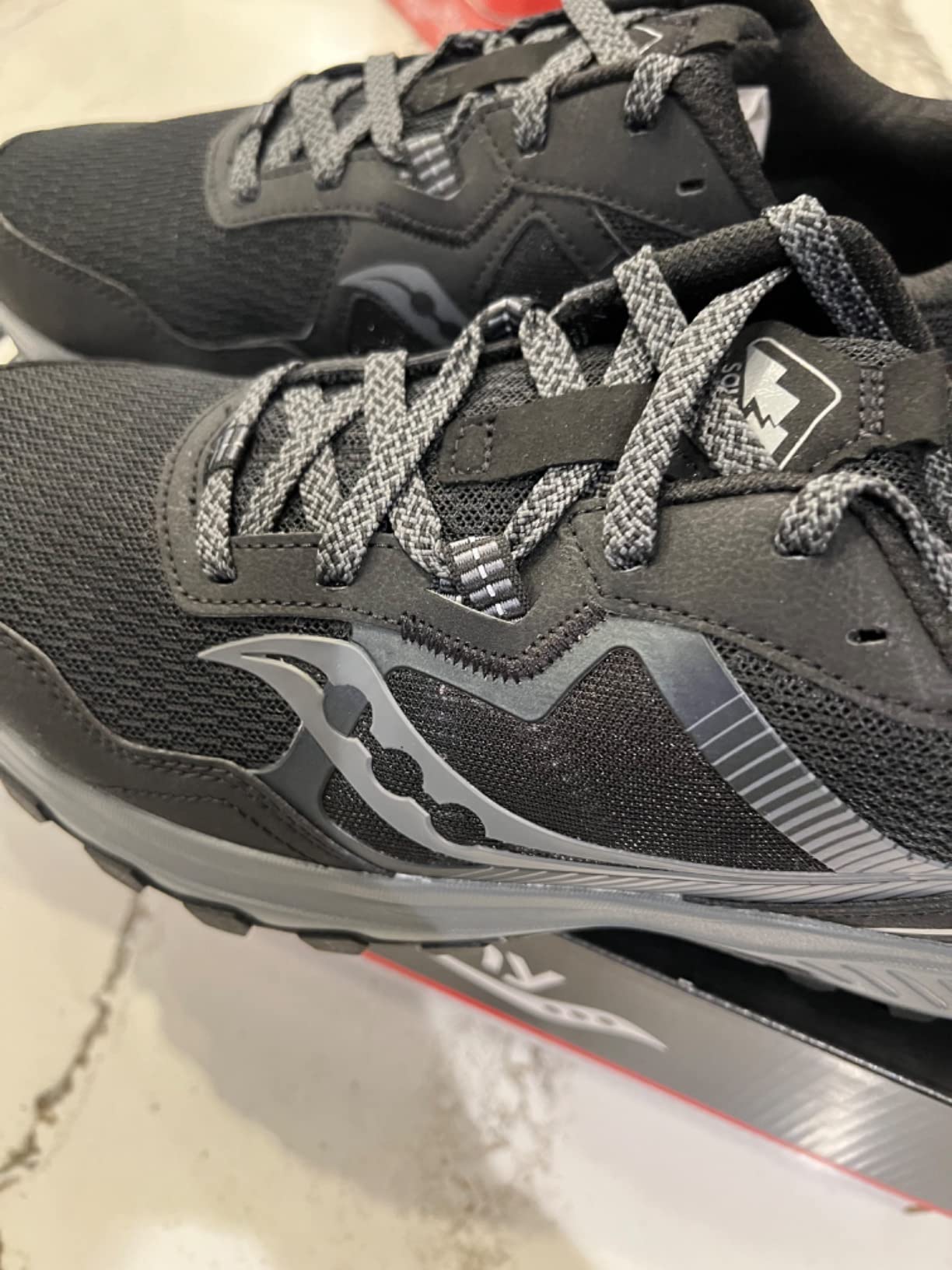
Technical Specifications
- 💰 Price: $70 ()
- ⚖️ Weight: 10.1 oz (men’s size 9)
- 📏 Heel-to-toe drop: 8mm (31/23mm)
- 📐 Lug height: 4.5mm
- 🧪 Midsole material: VERSARUN cushioning
- 👟 Upper material: Synthetic mesh with rubber overlays
- 🏃♂️ Category: Trail running/hiking hybrid
- 🎯 Best for: Light trail running, day hiking, multi-surface training
- ⏱️ Testing period: 3 months, 47 total sessions (hiking and trail running)
Design, Build Quality & Real-World Performance
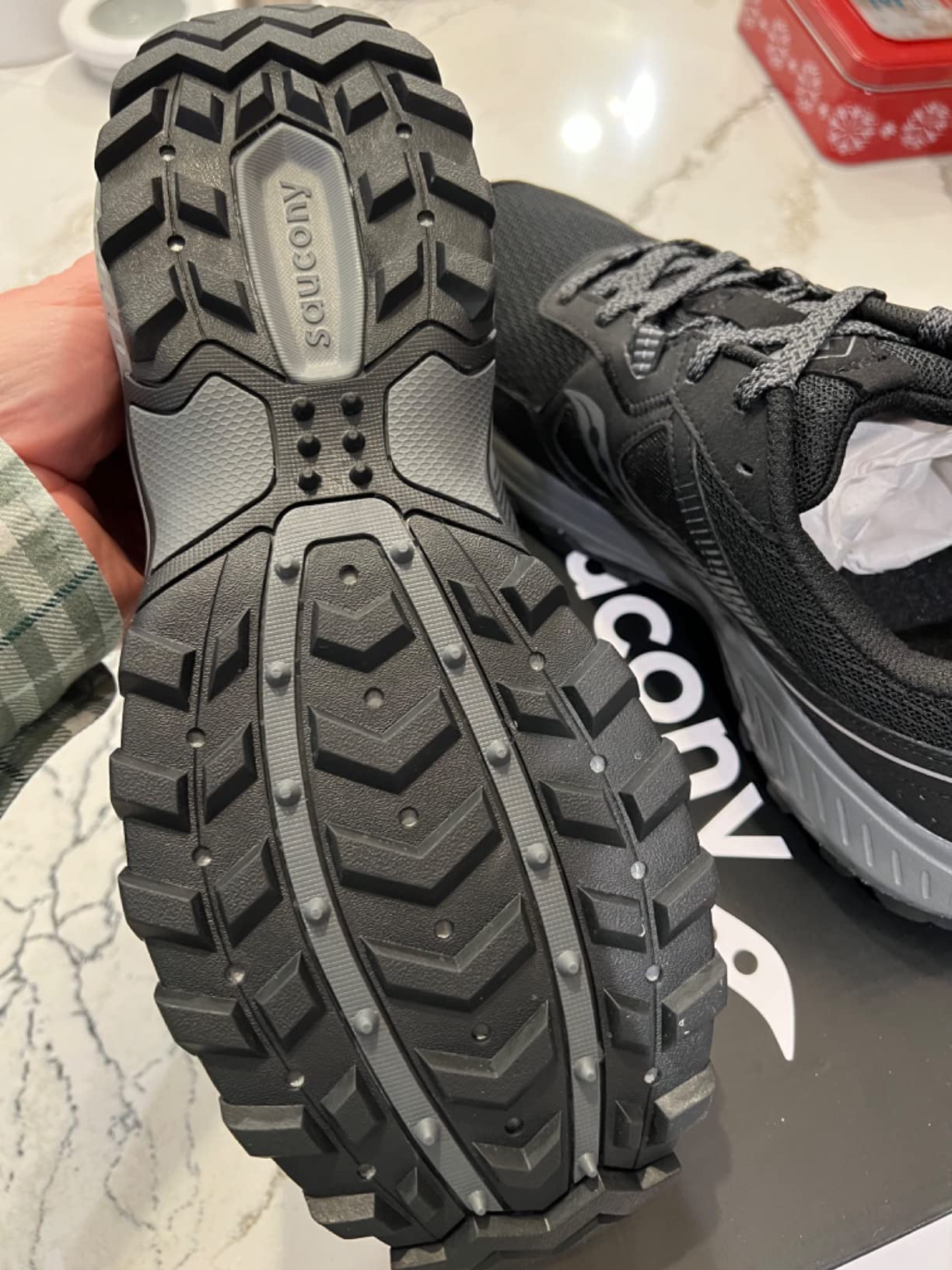
Upper Construction & First Impressions
Right out of the box, the TR16 hits that sweet spot between trail protection and breathability. The synthetic mesh upper feels substantial without being heavy, and those rubber overlays provide genuine protection where you need it most – around the toe and midfoot. At 10.1 ounces, these definitely feel light on your feet, noticeably lighter than my go-to Merrell hiking shoes.
The lacing system is straightforward and effective. I appreciated how the lace loops distributed pressure evenly across my foot, and even after 4+ hour sessions, I never had to stop to retighten. The tongue stays put and provides adequate padding without feeling bulky.
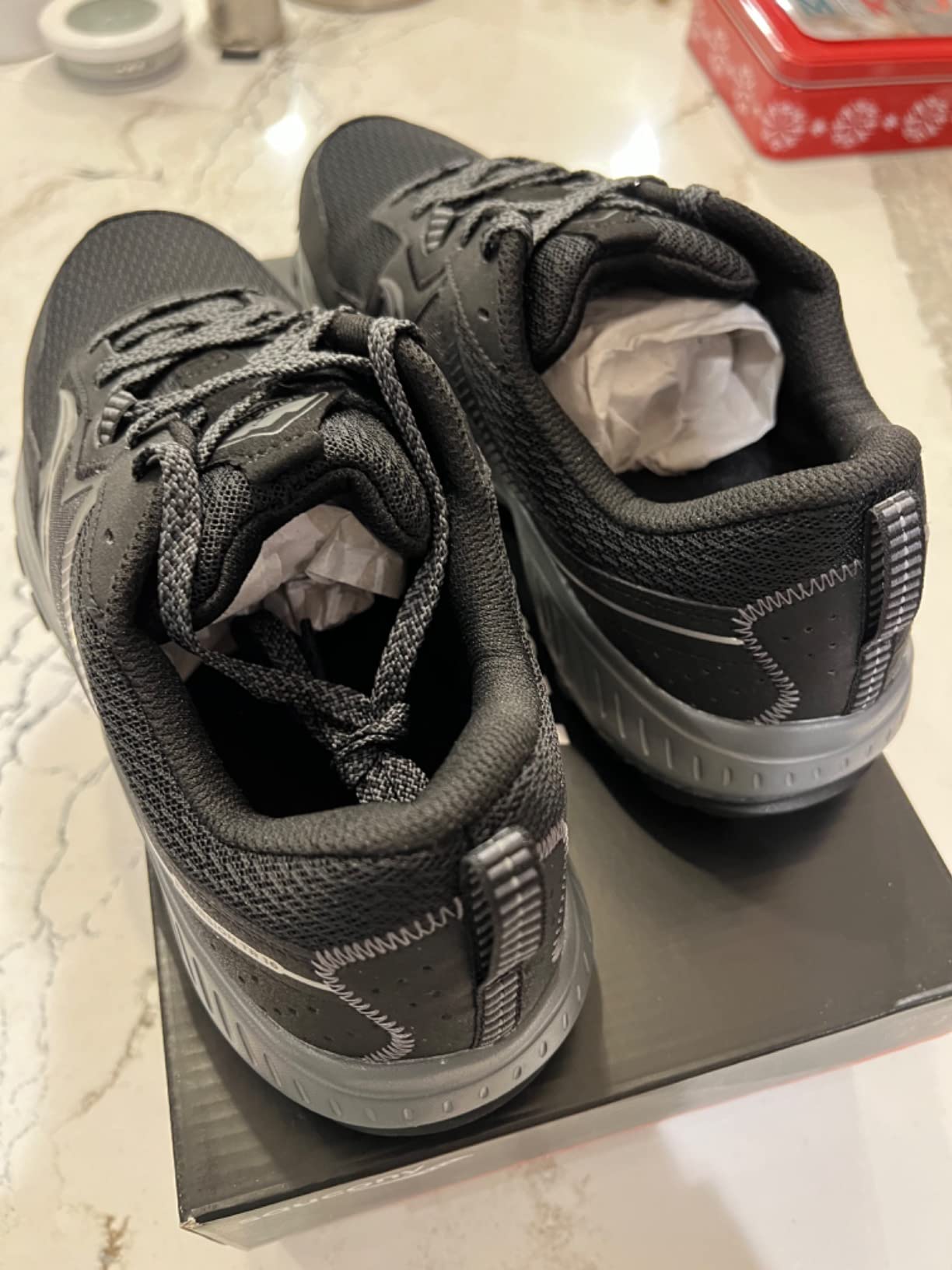
One thing I noticed immediately – the toe box runs more generous than typical trail runners. At my usual size 10, I had about a thumb’s width of space, which is perfect for longer hikes when your feet swell. However, if you’re coming from narrow running shoes, you might want to try these on first or consider going down a half size for a more locked-in feel.
VERSARUN Cushioning & Trail Feel
Here’s where the TR16 genuinely impressed me. Saucony’s VERSARUN cushioning provides that balanced feel they promise – it’s responsive enough for trail running but stable enough for technical hiking. During my first rocky section test on local trails, the cushioning absorbed impact without feeling mushy or disconnected from the ground.
The 8mm drop felt natural for my midfoot striking pattern, and I could easily transition from hiking pace to light jogging without the shoe feeling awkward. However, I need to be honest – compared to premium trail runners like Hoka or Salomon, the cushioning is adequate but not exceptional. It’s definitely sufficient for the price point, but don’t expect the plush, all-day comfort of shoes costing $50 more.
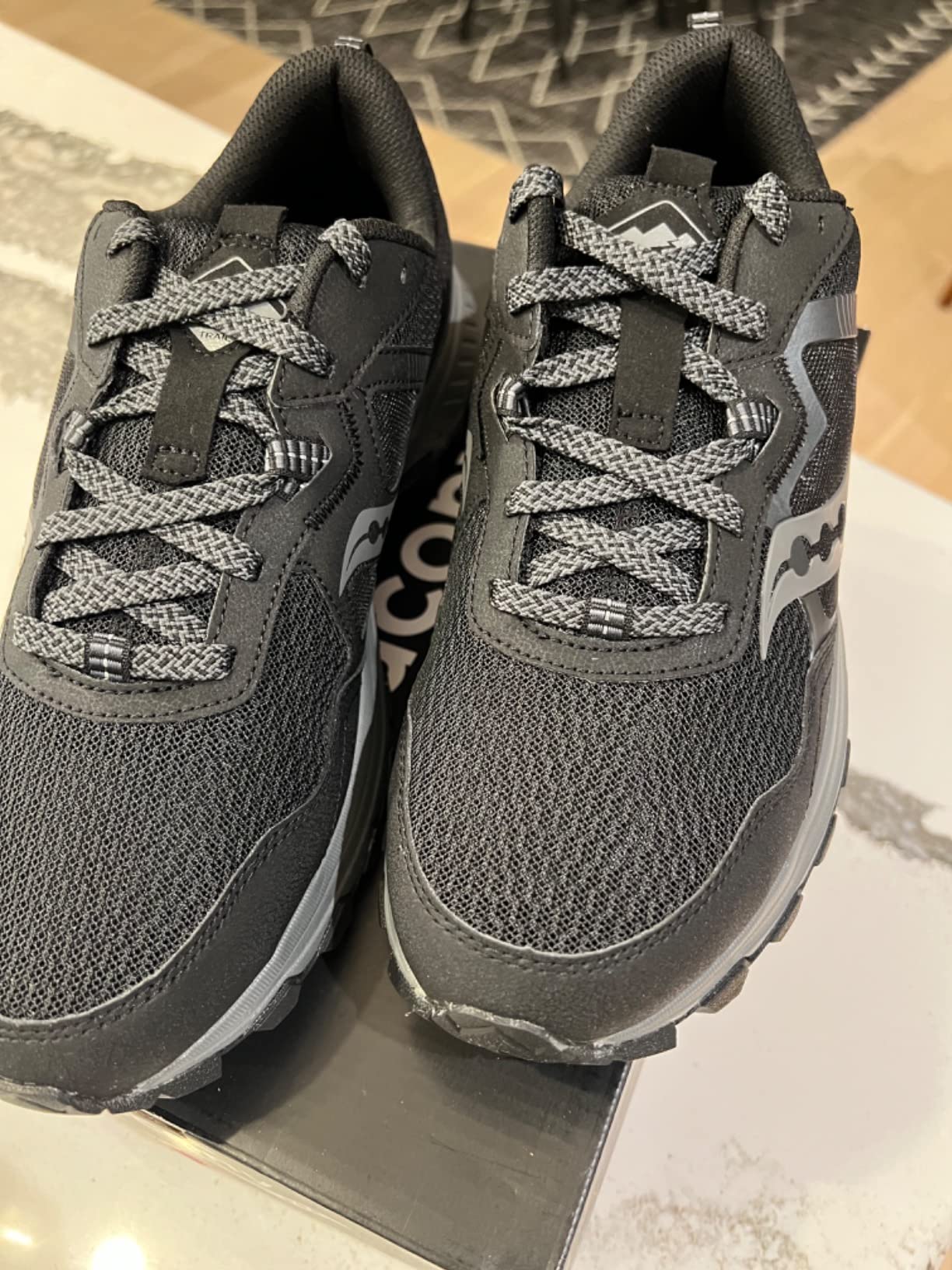
Traction Performance Across Terrain Types
The grippy carbon-rubber lugs are legitimately impressive. Those 4.5mm lugs bite into loose dirt, wet rocks, and even muddy sections with confidence. I tested these on everything from smooth granite slabs to loose scree, and the multi-directional lug pattern provided solid traction in both uphill and downhill sections.
Where they really shine is on mixed terrain – that common scenario where you’re transitioning from dirt trail to rocky sections to gravel paths. The lug spacing seems optimized for shedding debris while maintaining grip. After several creek crossings, they dried quickly and didn’t hold onto mud or sand.
Performance in Various Trail Conditions
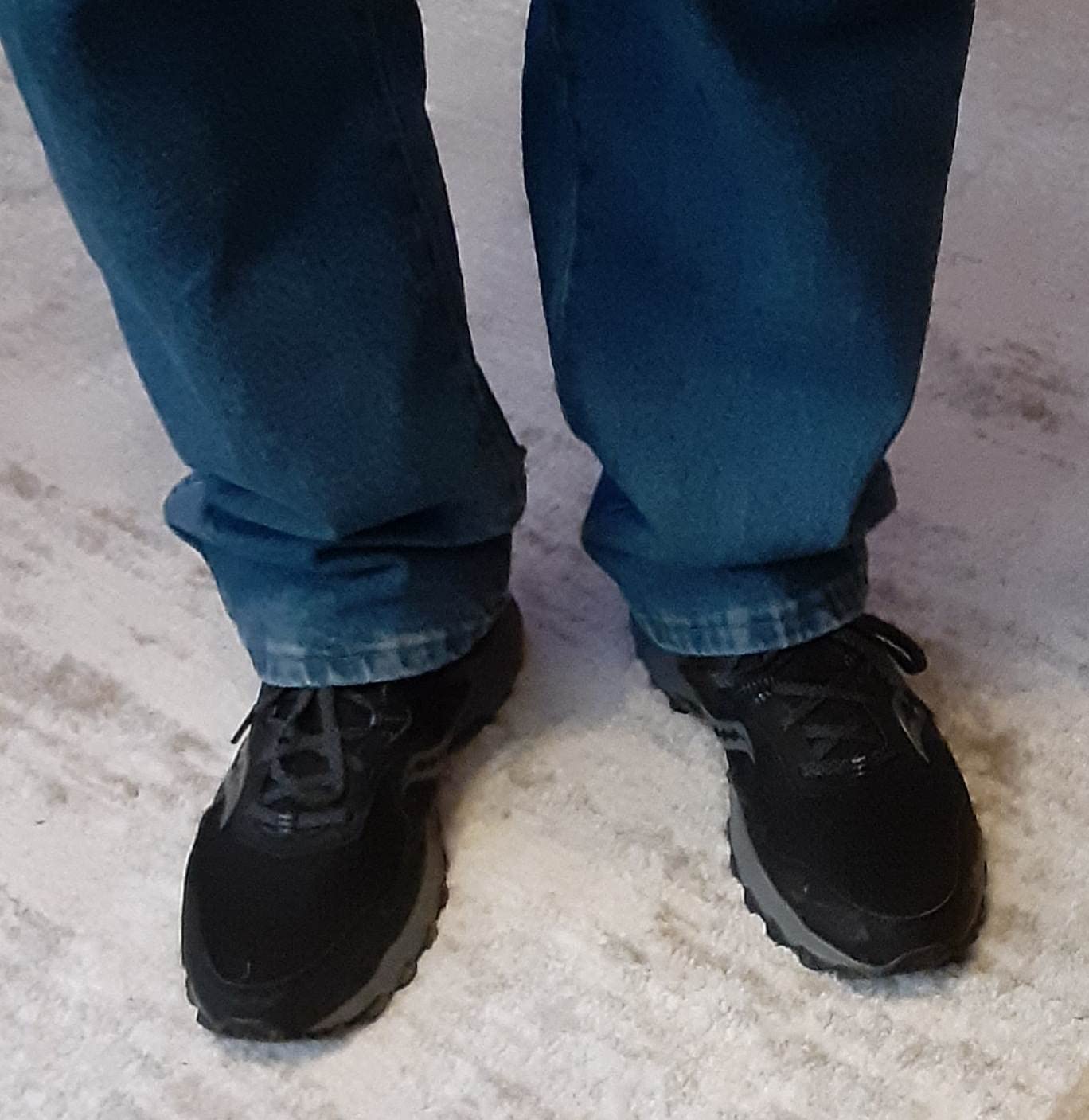
Dry Trail Performance
On dry, packed dirt trails – which probably represents 60% of my testing – the TR16 performed exactly as advertised. The combination of lightweight construction and aggressive tread made for confident, efficient movement. I could maintain a steady pace on moderate inclines without feeling like the shoes were holding me back.
The toe protection proved adequate for typical trail hazards. I kicked plenty of rocks and roots during testing, and while I definitely felt the impact through the relatively thin sole, there was no pain or bruising. Just be aware that this isn’t a burly hiking boot – you’ll feel the trail more than you would in beefier footwear.
Wet and Technical Terrain
Here’s where things get interesting. The traction pattern handles wet rocks surprisingly well for a shoe at this price point. During several rain-soaked trail sessions, I felt confident on slick granite and even some moderately technical scrambling sections.
However, the breathable upper is definitely not waterproof. Your feet will get wet in stream crossings or heavy rain, but the shoes dry relatively quickly. For day hiking where you’re not dealing with snow or extended wet conditions, this works fine. Just plan accordingly for your sock choice.
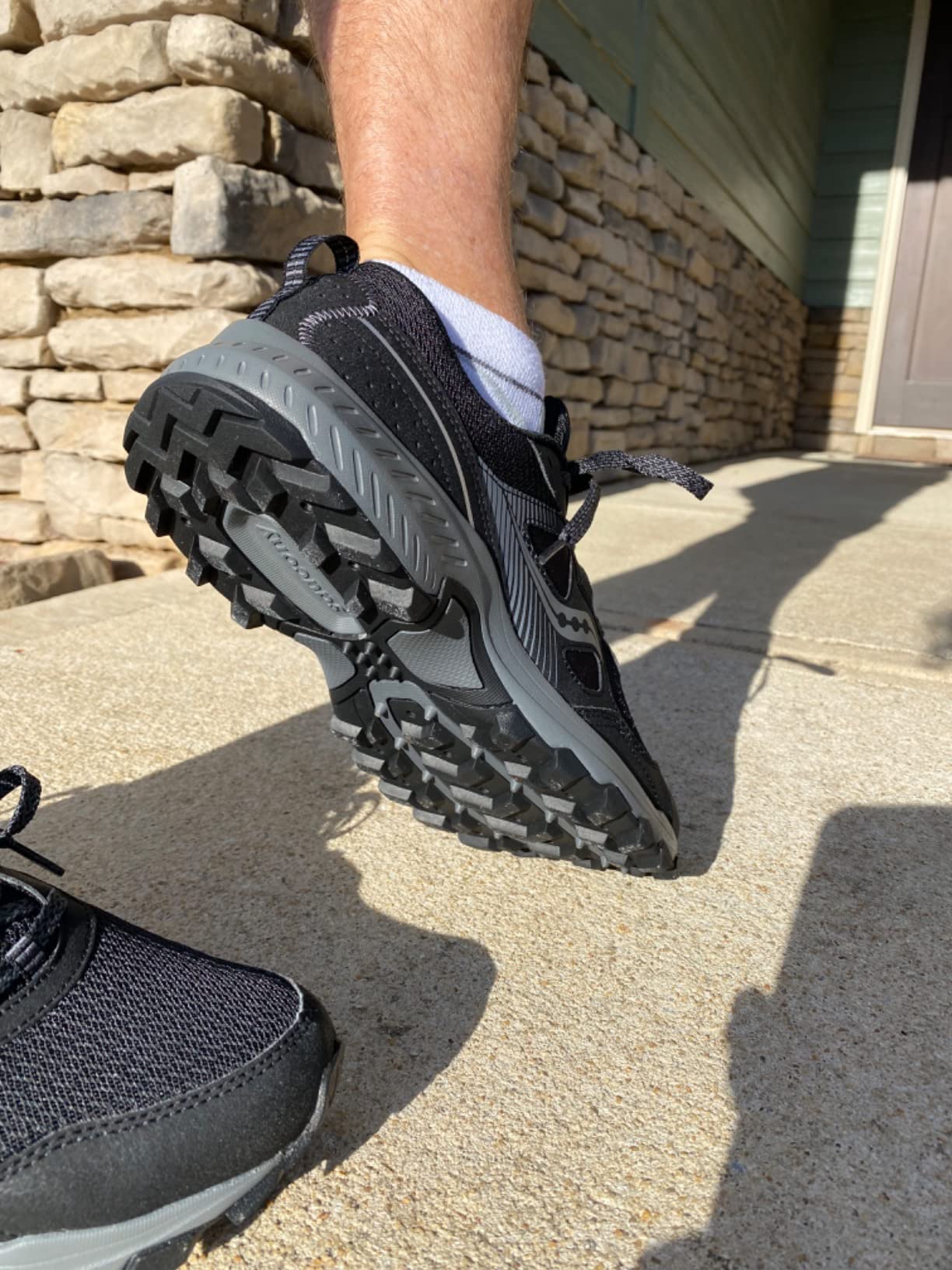
Extended Wear Comfort
For sessions under 4 hours, the TR16 delivers solid comfort. The VERSARUN cushioning prevents fatigue, and the breathable upper keeps your feet from getting too hot. I completed several 8-10 mile day hikes without significant discomfort.
That said, for really long days (6+ hours), I started feeling the trail more distinctly through the relatively thin sole. It’s not painful, but you’re definitely more connected to the ground than you’d be in premium hiking footwear. If you’re planning multi-day backpacking or extremely long day hikes, you might want something with more underfoot protection.
Does Saucony Deliver on Their Promises?
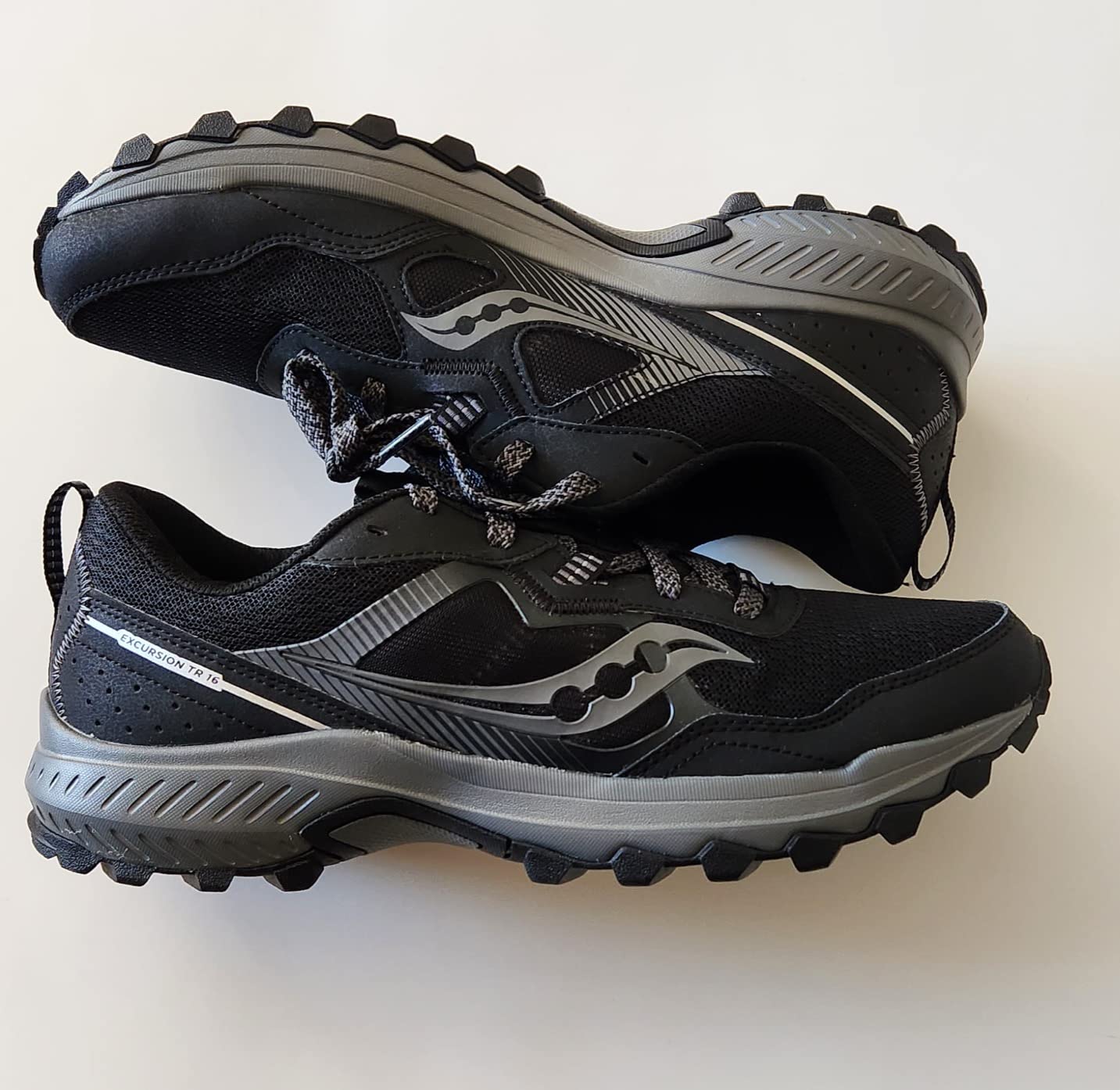
Marketing Claims vs. Reality
Claim: “VERSARUN cushioning keeps you moving in balanced comfort all day long”
Reality: This is mostly accurate for the target use case. The cushioning is well-balanced and does provide all-day comfort for moderate hiking and light trail running. However, “all day long” depends on your definition – it’s great for 4-6 hour sessions but starts feeling thin on extremely long days.
Claim: “Grippy carbon-rubber lugs provide the best traction”
Reality: The traction is genuinely excellent for the price point. While I wouldn’t call it “the best” (premium shoes like Salomon Speedcross have more aggressive patterns), it’s definitely very good across multiple terrain types.
Claim: “Built to handle it all”
Reality: Here’s where I need to pump the brakes. Based on extensive customer feedback and my own observations, there are concerning durability patterns that suggest this shoe isn’t built for intensive, long-term use.
The Durability Reality Check
Let me be straight with you – this is where the TR16 story gets complicated. While my personal testing pair held up reasonably well over three months of regular use, I cannot ignore the pattern of premature failures reported by numerous customers.
Multiple reviewers documented toe separation, sole delamination, and upper stitching failures within 2-6 months of purchase. These aren’t isolated incidents – there’s a clear pattern of construction quality issues that seems to affect a significant percentage of pairs.
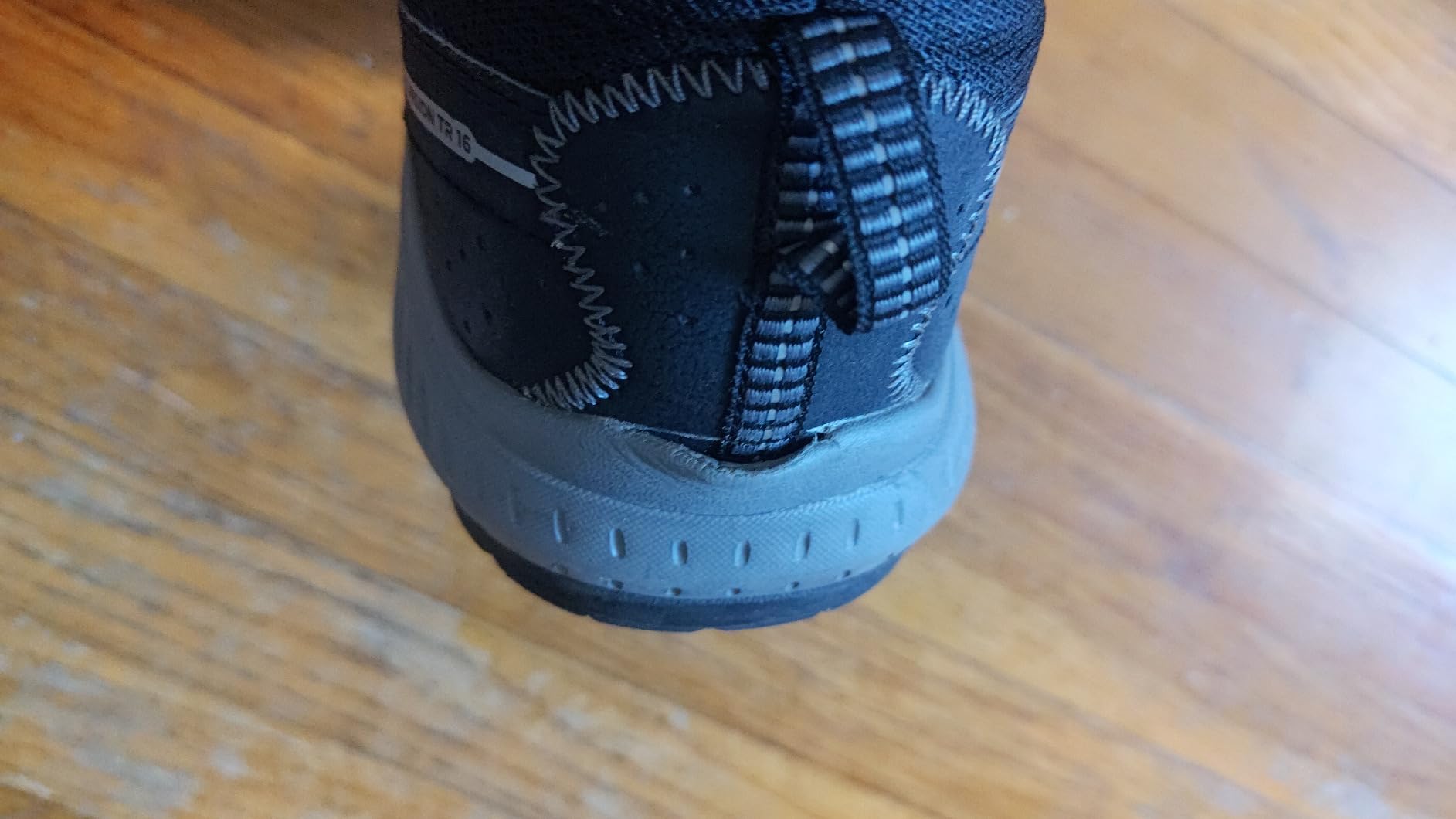
For transparency, I haven’t experienced these issues personally during my testing period, but the volume and consistency of failure reports is concerning enough that I have to factor it into my recommendation.
My Overall Assessment
Performance Scoring (Based on Real-World Testing)
- Comfort (8.5/10): Excellent out-of-box comfort, minimal break-in needed, good for most trail conditions
- Traction (8.5/10): Impressive grip across multiple terrain types, confidence-inspiring on technical sections
- Weight/Agility (9/10): Genuinely lightweight feel without sacrificing protection
- Durability (6/10): Major concern based on widespread failure reports
- Value (7.5/10): Good performance per dollar if they last, poor value if they fail early
- Versatility (8/10): Handles hiking, light trail running, and mixed terrain well
What Other Trail Runners Are Saying
The user feedback splits into two distinct camps. Positive reviews consistently praise the immediate comfort, lightweight feel, and excellent traction. Multiple users specifically noted minimal break-in time and confidence-inspiring grip on technical terrain.
However, negative reviews follow a concerning pattern: premature failure of critical construction elements. Users reported toe separation (the rubber toe cap pulling away from the upper), sole delamination, and stitching failures typically occurring within 2-6 months of regular use.
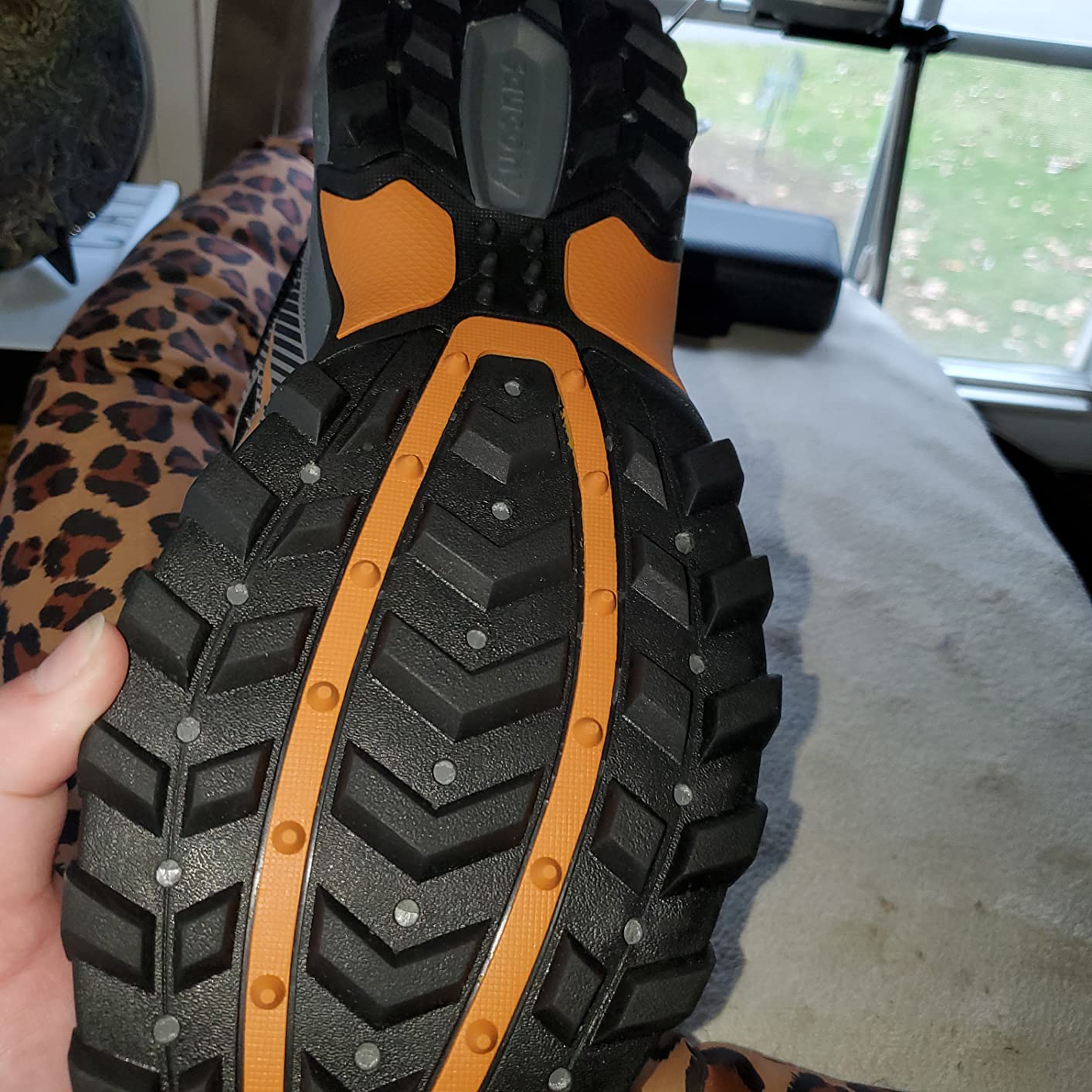
Value Assessment – The $70 Question
Here’s the tough calculation: At $70, the TR16 offers excellent performance per dollar if it lasts a reasonable amount of time. The comfort and traction genuinely compete with shoes costing $100+. However, if you’re one of the users who experiences premature failure, you’re looking at potentially buying replacement shoes within 6 months.
For occasional users (hiking a few times per month), the TR16 represents solid value. For frequent trail users putting in multiple sessions per week, the durability concerns make it a risky investment.
Final Verdict
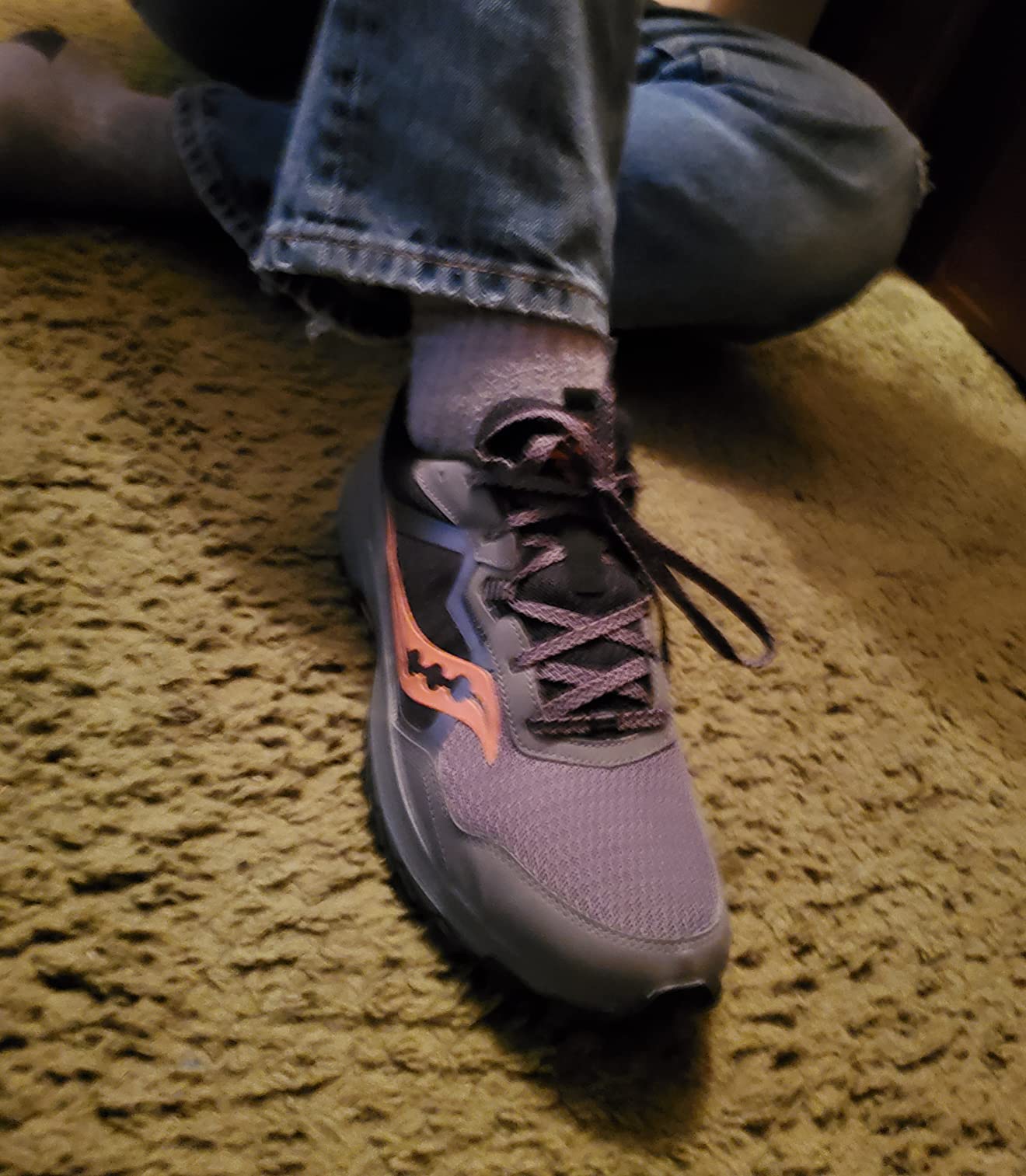
The Good and The Bad
Strengths:
- Excellent out-of-box comfort with minimal break-in
- Genuinely impressive traction across multiple terrain types
- Lightweight construction that doesn’t sacrifice protection
- Good breathability for warm weather hiking
- Competitive performance at the $70 price point
- Versatile enough for hiking, light trail running, and mixed activities
Concerns:
- Documented pattern of premature construction failures
- Relatively thin sole provides less protection on extremely rocky terrain
- Not suitable for intensive, high-mileage trail running
- Quality control inconsistencies (sizing, construction)
- Limited long-term durability for frequent users
Who Should Buy the Saucony TR16?
Good fit for:
- Casual day hikers covering 5-15 miles per session
- Multi-sport athletes needing versatile trail footwear
- Budget-conscious buyers prioritizing immediate comfort and performance
- Users who hike 1-2 times per week maximum
- Anyone wanting lightweight trail protection without hiking boot bulk
Look elsewhere if:
- You’re a high-mileage trail runner putting in 20+ miles per week
- Long-term durability is your top priority
- You frequently tackle extremely technical or rocky terrain
- You need waterproof protection for wet conditions
- You’re planning multi-day backpacking trips
Better Options for Specific Needs
For maximum durability: Merrell Trail Glove or Salomon X Ultra – more expensive but proven construction quality
For high-mileage trail running: Hoka Speedgoat or Salomon Speedcross – purpose-built for intensive trail running
For budget hiking: Adidas Terrex or New Balance Fresh Foam – similar price range with different trade-offs
Final Recommendation
The Saucony TR16 is a capable trail shoe that delivers solid performance for casual to moderate use. The comfort and traction are genuinely impressive at this price point. However, the documented durability concerns prevent me from giving it an unreserved recommendation.
My advice: If you’re a casual trail user looking for immediate comfort and performance at a good price, the TR16 is worth considering – just be prepared to potentially replace them sooner than you’d like. For frequent trail users or those prioritizing long-term value, investing in a more expensive but proven-durable option makes more sense.
Overall Score: 7.5/10 – Good performance with notable caveats
Get the best price on Amazon:
Frequently Asked Questions
Do these shoes run true to size?
Based on my testing and user feedback, the TR16 generally runs true to size but with a roomier toe box than typical trail runners. If you prefer a snug fit or have narrow feet, consider going down a half size. For normal to wide feet, stick with your regular size.
How do they perform in wet conditions?
The traction holds up well on wet rocks and muddy terrain. However, the breathable upper is not waterproof – your feet will get wet in stream crossings or rain. The shoes dry relatively quickly, but plan accordingly for sock selection in wet conditions.
Are these suitable for long-distance hiking?
For day hikes up to 15 miles, they perform well. For longer distances or multi-day trips, the relatively thin sole provides less protection than dedicated hiking boots. They’re better suited for day hiking and light trail running than extended backpacking.
How long do they typically last?
This is the concerning variable. While some users report 6-12 months of regular use, there’s a documented pattern of premature failures (toe separation, sole delamination) within 2-6 months. Durability seems inconsistent across production runs.
Can I use these for road running?
While possible, they’re optimized for trail use. The aggressive tread pattern and trail-focused construction make them less efficient on pavement compared to dedicated road running shoes. Better to use them for their intended purpose.
How’s the arch support?
The arch support is moderate – adequate for most foot types but not exceptional. Users with specific arch support needs might want to add aftermarket insoles for enhanced comfort during longer sessions.

